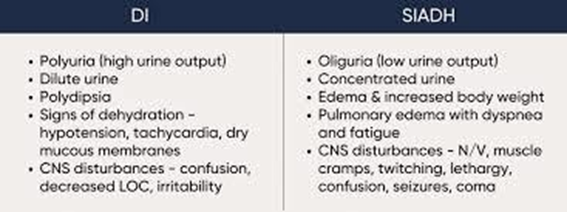Mrs. Jamerson, who had undergone surgery in the post-anesthesia care unit (PACU), is difficult to arouse two hours following surgery. Nurse Williams in the PACU has been administering Morphine Sulfate intravenously to the client for complaints of post-surgical pain. The client's respiratory rate is 7 per minute and demonstrates shallow breathing. The patient does not respond to any stimuli. The nurse assesses the ABCs (remember Airway, Breathing, Circulation!) and obtains ABGS STAT! Arterial blood gas measurement shows pH 7.10. PaCO2 70 mm Hg, and HCO3 24 mEq/L
What does this mean?
Metabolic Acidosis, Uncompensated
Respiratory Alkalosis. Partially Compensated
Respiratory Acidosis. Uncompensated
Metabolic Alkalosis. Partially Compensated
The Correct Answer is C
A. Metabolic Acidosis, Uncompensated, is ruled out because the elevated PaCO2 and low pH indicate a respiratory problem rather than a metabolic one.
B. Respiratory Alkalosis. Partially Compensated is ruled out because the pH and PaCO2 levels are both abnormal and indicate acidosis rather than alkalosis.
C. The low pH (acidosis) along with the high PaCO2 indicate respiratory acidosis, and there is no evidence of compensation by the kidneys (normal HCO3).
D. Metabolic Alkalosis. Partially Compensated, is ruled out because the pH is low (acidosis) rather than high (alkalosis), and the PaCO2 is elevated, suggesting a respiratory problem rather than a metabolic one.
Nursing Test Bank
Naxlex Comprehensive Predictor Exams
Related Questions
Correct Answer is B
Explanation
A. Hyperglycemia is associated with diabetes mellitus, not diabetes insipidus. Diabetes insipidus is characterized by excessive thirst and urination due to inadequate secretion of antidiuretic hormone (ADH), not hyperglycemia.
B. Dehydration is a hallmark finding in diabetes insipidus due to excessive urination and fluid loss. Clients with diabetes insipidus may exhibit signs of dehydration, such as dry mucous membranes, decreased skin turgor, and hypotension.
C. Bradycardia is not typically associated with diabetes insipidus.
D. Polyphagia, or excessive hunger, is a symptom of diabetes mellitus, not diabetes insipidus.

Correct Answer is A
Explanation
A. Oliguria, characterized by urine output less than 400 mL per 24 hours, is a hallmark of the oliguric phase of acute kidney injury.
B. BUN and creatinine levels typically increase during the oliguric phase due to decreased kidney function.
C. Renal function is not reestablished during the oliguric phase; this phase represents reduced kidney function.
D. The glomerular filtration rate remains decreased during the oliguric phase.
Whether you are a student looking to ace your exams or a practicing nurse seeking to enhance your expertise , our nursing education contents will empower you with the confidence and competence to make a difference in the lives of patients and become a respected leader in the healthcare field.
Visit Naxlex, invest in your future and unlock endless possibilities with our unparalleled nursing education contents today
Report Wrong Answer on the Current Question
Do you disagree with the answer? If yes, what is your expected answer? Explain.
Kindly be descriptive with the issue you are facing.
